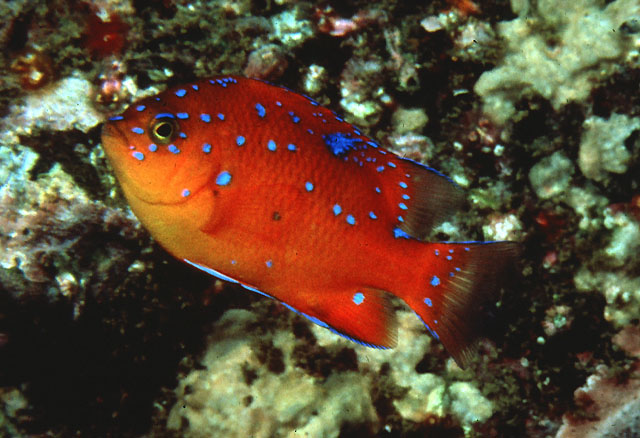- What and Why
- Getting started
- Syntax and basic elements
- Hands-on
- Using code to produce output
- Show and tell
Nov 1st, 2017
Outline
What and why?
What is this?
- Markdown is:
- a lightweight markup language
- easy-to-read, easy-to-write plain text that gets converted into HTML
- R Markdown is:
- The above + R code embedded to create graphs, tables, values… any type of R output
knitr, which is an R package, transforms *.Rmd into *.md, which is then processed bypandoc
Keep in mind
"But remember, Markdown was designed for HTML, and LaTeX was for PDF and related output formats."
Yihui Xie
- See Yihui's discussion on Markdown vs. LaTeX
Why?
- It is great for research
- Keeps everything together (analysis, references, text, data…)
- Easier to iterate over your work (i.e. easier to incorporate suggestions by Reviewer #2)
- It fosters reproducibility
Getting started (just text)
New Rmd document and types of output
- Slides
- ioslides
- slidy presentations
- beamer*
- HTML
- HTML notebook
- Word
- Shiny (interactive documents)
- Document
- Presentation
YAML
- Set of
key:andvaluepairs - Contains variables/parameters passed to
knitrandpandocto control output - The default one looks like this:
--- title: "Introduction to R Markdown" author: "Villaseñor-Derbez, J.C." date: "November 1, 2017" output: ioslides_presentation ---
YAML
- You can also specify many other things:
fig_caption: yesadds figure captions from chunkstoc: yesadds a table of contentssubtitle:"Fancy subtitle"adds a subtitlebibliography: references.bibspecifies where to look for BibTeX entriescsl: plos.cslspecifies citation format (in this case, PLoS ONE's)
See options for HTML and options for PDF output
Basic syntax
- Use
#to indicate headers *single asterisks*give me single asterisks**double asterisks**give me double asterisksm s^-2^is then m s-2- You can write LaTeX equations by wrapping an expression in
$:$E = mC^2$is \(E = mC^2\)
- Write Greek letters with
$\letter$:$\beta$gives you \(\beta\)
- Same for fancier equations:
$$\hat{Y} = \sum_{i = 1}^N\frac{\beta_a^4}{\phi \times \Omega} + \beta_b$$is just: \[\hat{Y} = \sum_{i = 1}^N\frac{\beta_a^4}{\phi \times \Omega} + \beta_b\]
Basic syntax: bullets
- Bullets can be specified by -, +, or *
This:
* Item 1
* Item 2
+ Item 2a
+ Item 2b
Gives:
- Item 1
- Item 2
- Item 2a
- Item 2b
Basic synax: numbered bullets
This
1. Item 1
2. Item 2
3. Item 3
+ Item 3a
+ Item 3b
Gives:
- Item 1
- Item 2
- Item 3
- Item 3a
- Item 3b
Links and Images
- Specify a link:
[go to google](www.google.com) and see go to google
- You can insert images saved on your computer, or from the web:
- image:

- image:
Hands-on
Code chunks and in-line code
There were "r nrow(mtcars)" cars studiedThere were 32 cars studied
- Used to isolate plain text from code
- Allow you to execute R, Python, Rcpp, SQL, and Stan within your file
- Use
Ctrl+Alt+I(Windows)Cmd+Alt+I(Mac) to insert Always name your chunks!
References
You need:
- A BibTeX file (provided in the CourseMaterials folder)
- Specify
bibliography:andcsl:in the header - That's it…
--- bibliography: references.bib csl: Citation_styles/ieee.csl ---
"A tidy dataset has one column per variable" [@wickham_2014]
"A tidy dataset has one column per variable" [1]
References
[1] H. Wickham, “Tidy data,” J Stat Softw, vol. 59, no. 10, 2014.
Tyler Clavelle has a great tutorial on this
Load packages
suppressPackageStartupMessages({
library(stargazer)
library(knitr)
library(kableExtra)
})
Code chunk options
echohides code from outputevalevaluate chunk?fig.widthfig.heightfig.capTo add figure caption
echo = TRUE
model <- lm(mpg ~ disp, mtcars) #Fit a linear model summary(model) # Look at the summary of the model
## ## Call: ## lm(formula = mpg ~ disp, data = mtcars) ## ## Residuals: ## Min 1Q Median 3Q Max ## -4.8922 -2.2022 -0.9631 1.6272 7.2305 ## ## Coefficients: ## Estimate Std. Error t value Pr(>|t|) ## (Intercept) 29.599855 1.229720 24.070 < 2e-16 *** ## disp -0.041215 0.004712 -8.747 9.38e-10 *** ## --- ## Signif. codes: 0 '***' 0.001 '**' 0.01 '*' 0.05 '.' 0.1 ' ' 1 ## ## Residual standard error: 3.251 on 30 degrees of freedom ## Multiple R-squared: 0.7183, Adjusted R-squared: 0.709 ## F-statistic: 76.51 on 1 and 30 DF, p-value: 9.38e-10
echo = FALSE
## ## Call: ## lm(formula = mpg ~ disp, data = mtcars) ## ## Residuals: ## Min 1Q Median 3Q Max ## -4.8922 -2.2022 -0.9631 1.6272 7.2305 ## ## Coefficients: ## Estimate Std. Error t value Pr(>|t|) ## (Intercept) 29.599855 1.229720 24.070 < 2e-16 *** ## disp -0.041215 0.004712 -8.747 9.38e-10 *** ## --- ## Signif. codes: 0 '***' 0.001 '**' 0.01 '*' 0.05 '.' 0.1 ' ' 1 ## ## Residual standard error: 3.251 on 30 degrees of freedom ## Multiple R-squared: 0.7183, Adjusted R-squared: 0.709 ## F-statistic: 76.51 on 1 and 30 DF, p-value: 9.38e-10
Fancier way to report models with stargazer
stargazer::stargazer(model, type = "html") #Create a regression table of the model
| Dependent variable: | |
| mpg | |
| disp | -0.041*** |
| (0.005) | |
| Constant | 29.600*** |
| (1.230) | |
| Observations | 32 |
| R2 | 0.718 |
| Adjusted R2 | 0.709 |
| Residual Std. Error | 3.251 (df = 30) |
| F Statistic | 76.513*** (df = 1; 30) |
| Note: | p<0.1; p<0.05; p<0.01 |
Fancier way to report models with stargazer
# Create a customized regression table of the model
stargazer::stargazer(model,
title = "Results of regressing miles per galon on displacement",
type = "html",
single.row = T,
covariate.labels = "Displacement (cu. in.)",
omit.stat = "adj.rsq")
| Dependent variable: | |
| mpg | |
| Displacement (cu. in.) | -0.041*** (0.005) |
| Constant | 29.600*** (1.230) |
| Observations | 32 |
| R2 | 0.718 |
| Residual Std. Error | 3.251 (df = 30) |
| F Statistic | 76.513*** (df = 1; 30) |
| Note: | p<0.1; p<0.05; p<0.01 |
- Awesome examples by Jake Russ
Figures with code
plot(mtcars$disp, mtcars$mpg, col = mtcars$cyl, pch = 20, xlab = "Disp (cu. in.)", ylab = "mpg") # Plot the model
This is my caption
Tables
- You can create raw markdown tables:
You type this:
First Header | Second Header ------------- | ------------- Content Cell | Content Cell Content Cell | Content Cell
It looks like this:
| First Header | Second Header |
|---|---|
| Content Cell | Content Cell |
| Content Cell | Content Cell |
Tables
- The above was not great for tables that summarize data, instead, use
knitr::kable() - Using the
taxa_table.csvfile in theCourseMaterials
Tables
taxa_table <- read.csv("Data/taxa_table.csv") #Load the data
knitr::kable(taxa_table) # Create a table of the data
| Family | Genus | Species | Count | Surfers |
|---|---|---|---|---|
| Pomacentridae | Hypsypops | rubicundus | 1 | 20 |
| Polyprionidae | Stereolepis | gigas | 2 | 18 |
| Scorpaenidae | Sebastes | hopkinsi | 30 | 10 |
| Scorpaenidae | Sebastes | paucispinis | 45 | 1 |
| Scorpaenidae | Pterois | volitans | 62 | 2 |
| Serranidae | Paralabrax | clathratus | 12 | 8 |
| Serranidae | Paralabrax | nebulifer | 15 | 12 |
California's State Fish

Juvenile Garibaldi (Hypsypops rubicundus)
- October 15, 1995, Adopted as the California State Marine Fish
Fancier tables with kableExtra
But scientific names (Genus species) are supposed to be in italics!
- Specify format by columns
knitr::kable(taxa_table, format = "html") %>% kableExtra::kable_styling() %>% kableExtra::column_spec(column = 2, italic = T) %>% #specify column styles kableExtra::column_spec(column = 3, italic = T) %>% kableExtra::column_spec(column = 4, bold = T)
| Family | Genus | Species | Count | Surfers |
|---|---|---|---|---|
| Pomacentridae | Hypsypops | rubicundus | 1 | 20 |
| Polyprionidae | Stereolepis | gigas | 2 | 18 |
| Scorpaenidae | Sebastes | hopkinsi | 30 | 10 |
| Scorpaenidae | Sebastes | paucispinis | 45 | 1 |
| Scorpaenidae | Pterois | volitans | 62 | 2 |
| Serranidae | Paralabrax | clathratus | 12 | 8 |
| Serranidae | Paralabrax | nebulifer | 15 | 12 |
Fancier tables with kableExtra
- Collapse rows
knitr::kable(taxa_table, format = "html") %>% kableExtra::kable_styling() %>% kableExtra::column_spec(column = 2, italic = T) %>% # Specify column styles kableExtra::column_spec(column = 3, italic = T) %>% kableExtra::column_spec(column = 4, bold = T) %>% kableExtra::collapse_rows(columns = c(1,2)) #collapse some rowws to delete obvious information
| Family | Genus | Species | Count | Surfers |
|---|---|---|---|---|
| Pomacentridae | Hypsypops | rubicundus | 1 | 20 |
| Polyprionidae | Stereolepis | gigas | 2 | 18 |
| Scorpaenidae | Sebastes | hopkinsi | 30 | 10 |
| paucispinis | 45 | 1 | ||
| Pterois | volitans | 62 | 2 | |
| Serranidae | Paralabrax | clathratus | 12 | 8 |
| nebulifer | 15 | 12 |
If there is time
Should be less than ~7 minutes
- Create an html document:
- Title
- Subtitle
- Author
- Headers and subheader
- A list with bullets
- Text with old and itallics
- 1 plot (nothing meaningful, invent something or use existing data)
- 1
knitr+kableExtratable
- Extra:
- Include an equation
- Code doesn't show
- Include at least 1 reference from the BibTex file
Resources
- Intro to R Markdown:
- YAML options:
- See options for HTML
- See options for PDF
- References
- Citation style library
- Tyler Clavelle's tutorial
- Stargazer
- Jake Russ' cheatsheet
- kableExtra
Resources
Show and tell
Show and tell
<div id="refs"></div>to specify placement of references (i.e. when you are writing a manuscript)- To add line numbers and double-spacing to your manuscript, add to the YAML:
header-includes:
- \usepackage{setspace}
- \doublespacing
- \usepackage{lineno}
- \linenumbers